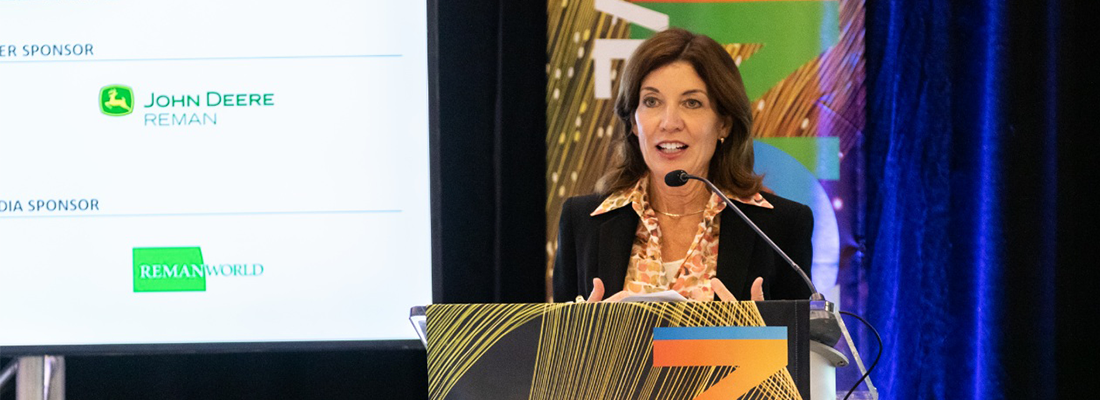Remanufacturing leaders from segments as diverse as automotive, healthcare, office furniture and heavy machinery gathered in Rochester, NY, for the annual World Remanufacturing Conference. Jointly hosted by the Remanufacturing Industries Council (RIC) and Rochester Institute of Technology (RIT), the conference boasted more than 300 delegates who heard from industry leaders, learned best practices and joined sometimes lively discussions about the future direction of the industry.
“What you’re doing has the potential to really impact our world,” declared lieutenant governor of New York Kathy Hochul in her welcoming address to conference attendees. “You’re able to take past materials and bring them back to life and put them back in the same environment. This has long-lasting benefits for our environment and our planet.”
Warming to that idea, Philippe Colpron, fleet solutions global business leader at Wabco, told delegates: “Automotive remanufacturing has an important role to play in enabling the commercial vehicle industry to operate in a leaner, greener and safer manner.”
The official theme of the conference was Disruptive Innovation, intended to challenge the industry to radically change how the world operates - both on the manufacturing and the consumer side. Key to this, according to several speakers, is to educate the rest of the world on what remanufacturing entails and how it compares to new and used goods.
A good portion of the conference centered on standardising the language around remanufacturing in an effort to differentiate the industry from reuse, repair, recycle and other processes that make up the circular economy. Attendees discussed what is - and what isn’t - remanufacturing based on existing language from various industry councils, government agencies and standards bodies. The goal, some argued, is to set agreed-upon standards in the US that could then be used around the world.
Fresh off his work establishing common language and standard definition of remanufacturing at the United Nations, RIC board member Dr. Nabil Nasir announced that RIC will be soon offering three certification levels based on the American National Standards Institute (ANSI) standard established in 2017. Several RIC members, including John Deere and Davies Furniture, have begun the ANSI accreditation process to help optimise workflows and get it ready for RIC members to begin certification in the first quarter of 2020.
Serial disruptor Kevin Surace gave a rousing keynote address that encouraged attendees to dare to take risks and not be afraid to fail. A Silicon Valley veteran with more than 84 patents worldwide, Surace recalled how he recently led a project to replace 6,514 windows in New York’s Empire State Building with 26,000 energy efficient remanufactured panes. While most window manufacturers insisted he couldn’t remanufacture glass, Surace pushed his team to find a way, he said. They built a temporary plant on the building’s fifth floor that took in, remanufactured and replaced the windows each night - and the project was completed in less than eight months with better than expected energy and cost savings.
“As long as you aren’t breaking the laws of physics, you can do anything,” he explained.
While general sessions at the conference focused on broad initiatives, break-out sessions were more granular. Topics ranged from how to develop a manufacturing workforce for 21st century challenges to best practices for optimising core takeback. Members also networked throughout the conference - both in common areas between sessions and at special events during the evenings. Attendees were also able to take a tour of the Golisano Institute for Sustainability, a leading sustainability research, development, and technology deployment unit within RIT, and celebrated RIC ACE Award recipients at a dinner.
Here are some key insights from the conference…
- ACE Awards the winners
- ANSI certification released






